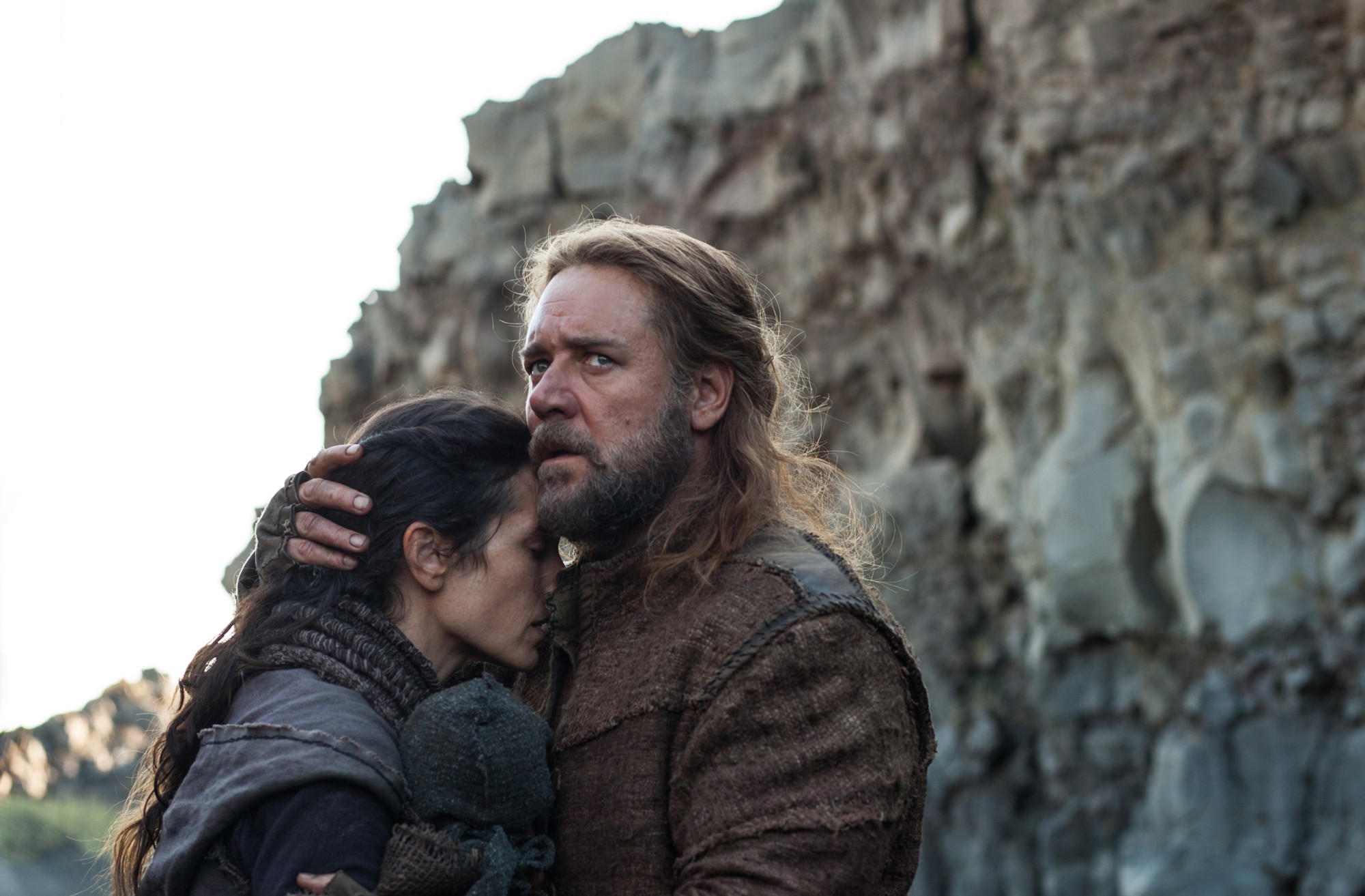This review was originally published in March 2014. The images are from the film and are not my own.
One of my earliest memories is my dad reading to me from Ken Taylor's Bible in Pictures. The images seared in my early memory were far different than the cartoon images in other children's Bibles. They were vivid and realistic, men with muscle and woman with grace. These images were my earliest encounter with the Noah account and one particular image stood out as I watched Darren Aronofsky’s Noah. It was of a wooden ark, tightly sealed, mounted on jagged, painful rocks. Water poured from the sky and gushed off the these stones while desperate men and woman clung on for life while others slipped into the encroaching waves.
Any time Hollywood takes a beloved story and illustrates it on the big screen, scores of angry fans of the book will tear apart any time the adaptation commits infidelity to the text. But if such is the case for a work of fiction, the response is intensified when someone tries to adapt the Bible. It's disappointing that there is such backlash from Christians who have historically had a close relationship with the arts, especially religious art. So it's no wonder recent adaptations safeguard themselves from such response by creating tame and boring films of biblical texts, like the recent Son of God.
So I was rather intrigued when it was announced that Darren Aronofsky was directing a large budget version of this beloved story. Aronofsky is first and foremost an artist who is bound to use his greatest gift, his imagination, in telling this story. And, contrary to what many devote Christians are raving against it, Aronofsky is treating the text with great seriousness, both in details, like the measurements of the ark, and the human themes contained in the account.
Immediately apparent is a distinct visual style. The antediluvian world is depicted as far different than our own. Barren, expansive landscapes are paired with crude ancient clothing, architecture, and artifacts. Of course Aronofsky gives us the expected stunning visual moments that draw us, the audience, in with anticipation - animals surging towards the ark, water springing from the ground and pouring across the earth. Less expected but equally appreciated were the small imaginative details like stop motion flow of time passing while the creator creates and the reoccurring figure of Cain killing Abel as a symbol for man's propensity to violence.
But these broad brush strokes also lumbered, much like the ridiculous and unnecessary fallen angels turned rock giants. Part of the challenge is that this story is so familiar and linear that the director almost has to add extra drama, drama that ultimately weighed down the flow of the film.
Aronofsky’s is deeply concerned with the humans that are at the centre of this story, particularly Noah and his call to obey a God he doesn't understand and isn't quite sure he hears. This was a clear departure from the text in scripture, where God’s message to Noah is explicit and allows many opportunities for the rest of mankind to repent and take refuge in the ark. But this departure results in a fascinating dilemma to materialize. Man is pictured in this film as fallen to his very core, both in his actions and the intent of his heart. It accurately depicts the root of the Fall as wanting to be like God and refusing to allow His word to rule.
At one point, Noah, having seen the extent of human evil in the hoards that surround the ark, comes to realization that this same fallen nature is rooted in him too. His wife insists that he and his children are good, listing off their attributes until Noah interrupts her. “If their lives were at stake , wouldn't you kill others for them?” In coming to this honest realization of his personal propensity to evil, Noah (and his screenwriter) have been more accurate as to the state of humanity then many other recent films.
Noah is left with an intense internal dilemma. Why has God chosen him and his family to continue to live? What has made them so special when the Fall as ruined them too? Don’t they and their innocent offspring deserve death, the same death brought upon their neighbours by the waters around them?
Aronofsky is creating this movie from the perspective of a Jew-turned-athiest, and he doesn’t give an answer. He hints at a possibility through a drunken, naked, and broken Noah on a beach, restoration and reconciliation through new life, and the unspoken promise of a rainbow pulsating from above.
But it is through redeemed eyes that we look back on the story of Noah, seeing grace from judgement offered through one man. We see a God who himself shut the door of the ark, giving many plenty of time to get onboard. We see a family, themselves just as broken as their neighbours, offered mercy through a second chance but we also see a means for this grace to appear. Noah is allowed to live, but his wickedness did not go unpunished. “By faith Noah…” says the writer of the New Testament book of Hebrews. By faith he trusted in the God who saved him and by faith the punishment that he deserved was passed on to another, an innocent man, the God-man made flesh, Jesus Christ. That is my answer to the very important dilemma put forth in the film.
So is this movie perfect? Far from it. Is it an artistic accomplishment? Absolutely. It engages an age-old text, raising serious questions that will result in fascinating discussions; therefore it deserves be seen.



